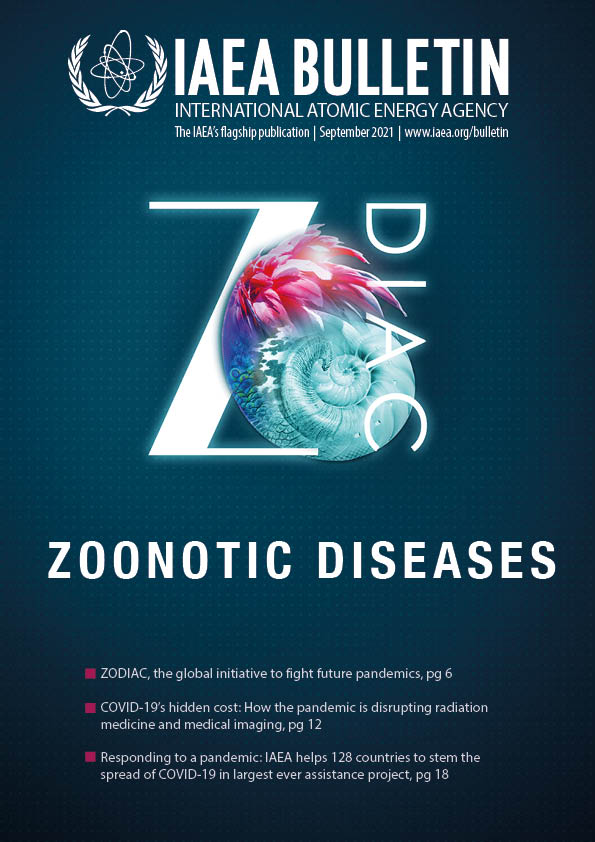In 2019, an outbreak of foot-and-mouth disease (FMD) and an ineffective vaccine put an untold number of cattle, sheep, pigs, goats and other cloven-hoofed livestock in Morocco at risk. A highly contagious viral disease, FMD causes fever and vesicles in the mouth and on the feet of infected animals. This can lead to lameness and other symptoms, making the animals unfit for consumption, causing losses for farmers. The end of the outbreak began with a genetic comparative analysis that resulted in the selection of a different vaccine — a solution made possible thanks to IAEA support to local authorities, in partnership with the Food and Agriculture Organization of the United to Nations (FAO), in building capacity in advanced molecular techniques.
Viruses, like the one that causes FMD, are constantly evolving into new varieties and strains. Vaccines are an effective option to control virus outbreaks, but specific vaccines only work on specific virus strains. Understanding a virus’s genome is essential to identifying the best vaccine.
Work to protect Morocco’s cloven-hoofed animals began two years before the outbreak, when staff from the National Office for Food Safety of Casablanca were trained through the IAEA technical cooperation programme to identify and characterize disease pathogens and guide control and response measures. This is just one of many training initiatives conducted since the IAEA–FAO’s genetic sequencing service was established in 2017. Today, support provided by the service stretches across Africa, Asia and Latin America and helps experts there use and understand the latest analytical techniques for pathogen characterization.
“Pathogen characterization and understanding the origins of animal and zoonotic diseases is essential for designing effective responses to such diseases,” said Ivancho Naletoski, a technical officer for animal health at the Joint FAO/IAEA Centre of Nuclear Techniques in Food and Agriculture. Naletoski has been spearheading the sequencing service and supporting activities in training scientists globally in developing phylogenetic trees for animal and zoonotic diseases.
A branching diagram representing the evolutionary course of an organism, a phylogenetic tree helps scientists understand the relationship between different outbreaks of a virus and determine their source or origin. Naletoski says phylogenetic trees and in-depth genetic analyses support authorities in making the right choices to bring pathogens under control. “For decision makers, it’s very important to have an accurate genetic profile of the viruses they’re trying to address. These data can help save countries time and money when selecting vaccines. As a result, there’s a growing demand for our service.”

